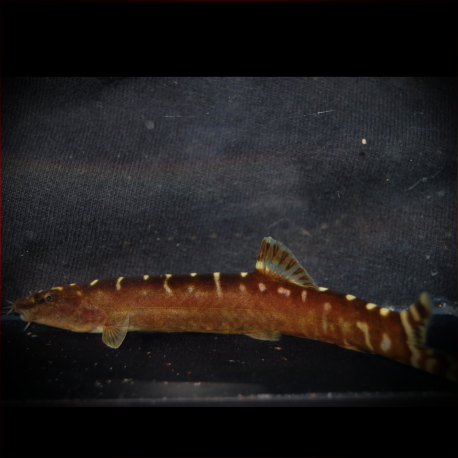More info
Datasheet
| Minimum Tank Size | 120 litres / 31.70 US gallons |
| Maximum Size | 10.0cm / 3.94inches |
| Temperature | 15.5°C / 59.90°F - 21°C / 69.80°F |
| Hardness | 5.04dgH / 90ppm - 20.00dgH / 357ppm |
| pH | 6.5-7.5 |
Aquarium Setup
Leptobotia Guilinensis should be housed in a tank set up to mimic a flowing stream, featuring a substrate of varied rocks, gravel, and water-worn boulders (see table). Additional decor such as driftwood, roots, and branches can create shaded areas, while PVC piping provides cover. Although most aquatic plants may struggle in such an environment, sturdy species like Microsorum, Bolbitis, or Anubias can be attached to the decor. Bright lighting encourages aufwuchs growth. To thrive, this species requires clean water devoid of organic buildup, high dissolved oxygen levels, and moderate water movement. External filters and powerheads can help maintain water quality. Stable water conditions are vital, so avoid adding these loaches to newly established tanks.
Behaviour
Leptobotia Guilinensis is not typically aggressive but may intimidate smaller or slow-moving species due to its size and activity level. Peaceful cyprinids are suitable tank mates. They are social animals, forming complex hierarchies, thus a group of 3-4 individuals is recommended to prevent stress or aggression. Solitary or paired specimens may exhibit withdrawal or aggression towards similar-looking fish.
Feeding and Diet
In their natural habitat, Leptobotia Guilinensis likely preys on insects, crustaceans, and smaller fish. Captive individuals should receive a varied diet consisting of live or frozen bloodworms, Tubifex, chopped shellfish, earthworms, and high-quality sinking dried foods.
Reproduction & Dimorphism
There is no available information on the reproduction of Leptobotia Guilinensis. Sexual dimorphism is unconfirmed, but mature females are expected to be heavier-bodied.
Habitat and Distribution
Native to China, Leptobotia Guilinensis was described in a tributary of the Yangtze River in Guangxi Province. It is also found in neighboring Hunan Province, particularly within the Wulin mountain range. This species likely inhabits clear, oxygen-rich, flowing waters with rocky or gravelly substrates, adapting to various river settings based on seasonal changes.

